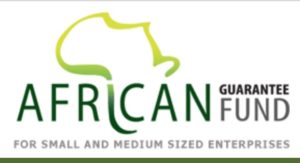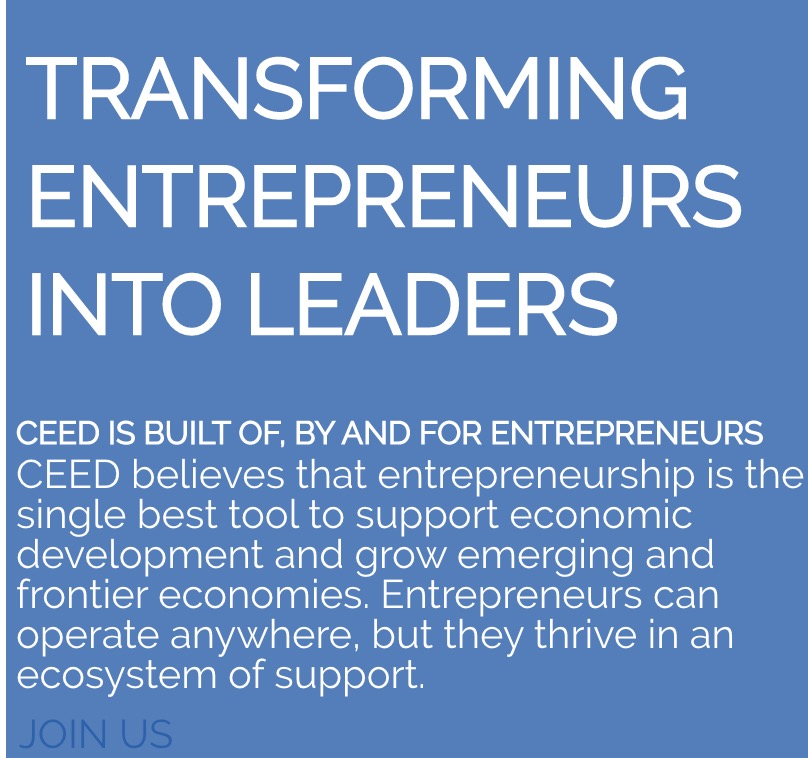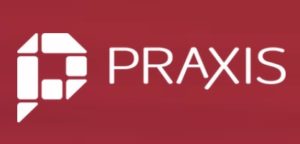Foreign aid from Small Enterprise Assistance Funds
Consider the NSDA immigration reform topic, the Stoa foreign aid reform topic, and all three NCFCA topics (West Africa, European Union, International Terrorism): what if a single case could resolve or at least shed light on them all? For example, if past foreign aid to Latin American had been less misguided, and their economies were now thriving, far fewer people would risk their lives trying to escape chaos and poverty to come to the United States. (See, for example, The Pen is Mightier Than the Plan for discussion of past foreign aid.)
What international investment, trade, or foreign aid policies would best enable entrepreneurship and enterprise in Latin American, Africa, the Middle East, India. and elsewhere in the developing world?
Steven Koltai’s Harvard Business Review article Entrepreneurship Needs to Be a Bigger Part of U.S. Foreign Aid, (August 15, 2016) notes that foreign aid is a much smaller slice of the U.S. budget than most people think (not 25%, just 1%) and unfortunately, the percentage promoting entrepreneurship is even smaller: less than 1% of current foreign aid. Koltai cites relevant research:
Harvard Business School professor Josh Lerner has contrasted the divergent economic fates of Singapore and Jamaica – resource-poor islands whose populations and per capita GDPs were nearly identical in 1965 – and stated, “In explaining Singapore’s economic growth, it is hard not to give considerable credit to its policies towards entrepreneurship.” And the Legatum Institute, when aggregating data from the World Bank, the United Nations, and elsewhere to formulate its Prosperity Index, has found that of its many indicators, “entrepreneurship & opportunity” correlates most strongly with a country’s overall prosperity.
Reducing institutional and regulatory barriers to entrepreneurs and start-up companies is key to enabling and reviving economic expansion across the European Union, West Africa, and the Middle East/North Africa (MENA), where international terrorism is a major concern (and one of the NCFCA topic choices).
Koltai quotes Hernando de Soto and Egyptian-American investor Ahmed El Alfi:
The cradle of ISIS, al-Qaeda, and extremist ideology – the Middle East & North Africa (MENA) region – suffers from the world’s highest youth unemployment rates, rates exceeding 40%. It’s such dark economic circumstances that prompt Peruvian economist Hernando de Soto to plead, “The West must learn a simple lesson: economic hope is the only way to win the battle for the constituencies on which terrorist groups feed;” … and Egyptian-American investor Ahmed El Alfi to urge, “We have to give people something to live for, instead of the guys that pitch them something to die for.”
Consider the track record of an unusual pro-enterprise foreign aid program launched over thirty years ago: SEAF. The Small Enterprise Assistance Funds history page explains:
Active for nearly thirty years, SEAF has experience in the Impact Investing space that is amongst the deepest in the industry. SEAF began in 1989 as…a single member NGO owned by CARE, the international relief and development organization. At the time of …launch, the international developmental community had begun to recognize the growing importance of the private sector in achieving economic growth, both in developing countries and in the transition countries following the fall of the Berlin Wall. Governments, international development institutions, and commercial investors alike turned to growing SMEs to seek to achieve prosperity and political and economic stability.
SEAF is: Improving Lives and Communities through Entrepreneur-Focused Investment
Yesterday’s Economic Thinking post, Effective Foreign Aid: Diasporas and Remittances, presented development economist William Easterly’s “planners vs. searchers.” Entrepreneurs are searchers, identifying problems and developing enterprises to address those problems. Access to capital for investment is important as is access to investment advisors to evaluate and guide new enterprises. That’s not the traditional approach of top-down foreign aid programs, but it is the way SEAF and other market-based investment funds operate.
Such development funds are self-sustaining. They invest in a range of enterprises in challenging regions and some prosper so they earn returns when SEAF exits (that is, sells its ownership position to other investors). SEAF then has additional funds to invest in new enterprises. More information on SEAF investments, strategies and goals in on the SEAF.com website.
An Africa Development Bank Group webpage describes what looks to be a similar investment fund: the African Guarantee Fund for Small and Medium-sized Enterprises:
There is a strong economic case for scaling up support for African SMEs. Development assistance for SMEs in Africa remains highly fragmented, with several donors and development finance institutions (DFIs) running a number of SME programs in an uncoordinated way. A regionalization of support and a pooling of resources are required to avoid duplications and inefficiencies, in the spirit of the Paris Declaration and the Accra Agenda for Action.
The Africa Guarantee Fund’s webpage is here and has this welcome description:
Small and Medium Enterprises (SMEs) are widely recognized as big drivers of economic growth, innovation, regional development and job creation. A strong and vibrant SME sector provides a strong foundation to increase standards of living and to reduce poverty. Despite the internationally recognized importance of SMEs, African small businesses often have difficulties accessing financing for growth and innovation from the formal financial sector. SME financing is often considered by many financial sector players in Africa to be a risky activity as promoters quite more often than not, fail to come up with the collateral levels required to secure bank facilities.
“SMEs are the Coca-Cola and Nestlé of tomorrow,” African Guarantee Fund’s Felix Bikpo, (African Business, June 21, 2017) gives some Africa Guarantee Fund (AGF) history:
Before AGF, if you look at the volume of the financing from the financial sector to SMEs, it was very low. Today we are in almost 40 countries in Africa through almost 100 financial institutions and we notice that the percentage of loans to SMEs has significantly improved. It’s helped us to go from 3000 to 11,000 SMEs having access to financing on the continent.
We want this number to increase year by year. It’s not just about a guarantee, its about giving the financial sector the comfort it needs. You can see success stories in Côte d’Ivoire, Nigeria, Kenya, Mozambique, Ghana, Togo and Mali. A lot of SMEs before could not expand their activity and they can today because of AGF.
Though this and many other articles on developing economies describe the problem as a lack of access to adequate capital, that’s only part of the story. Funding poorly-conceived enterprises is as much a problem as not funding high-potential enterprises. Local knowledge, insight must be combined with management ability and operational skills. The role of investors and investment funds is also to say “no” to many proposed business plans. When misguided enterprises are funded they waste capital as well as scarce time and resources, making all unavailable for high potential businesses.
In between for-profit and nonprofit investment and aid are organizations like eBay founder Pierre Omidyar’s Omidyar Network, which provide both development aid and “impact investments:”
Impact investing seeks to generate both social change and a return on capital. It ends the old dichotomy where business was seen solely as a way to make a profit, while social progress was better achieved only through philanthropy or public policy. At Omidyar Network, we define philanthropy more broadly. We believe all individuals and institutions can contribute to the well-being of society, whether they operate as a for-profit business or a nonprofit organization. Leaving the markets out of our efforts to tackle society’s most intractable problems ignores a powerful force for identifying viable solutions that can scale to help millions. (From the Our Work, Impact Investing page)
Small Enterprise and Impact Investing can transform struggling and war-torn countries across the Middle East North Africa (MENA) as well. For an earlier debate topic State Ownership to Startup Rising: An Entrepreneurial Revolution in the Middle East (Economic Thinking, Updated October 27, 2016) presented an upbeat perspective:
Christopher Schroeder’s Startup Rising: The Entrepreneurial Revolution Remaking the Middle East gives a glimpse of what to expect as venture capital supports dozens, hundreds, then thousands of Middle East entrepreneurs from Turkey to Jordan, Lebanon, the UAE to Egypt and all the countries in turmoil in between.
Imagine the Middle East with tens of millions of people carrying hand-held computers. That’s not some distant utopian tech future but today in the Middle East. For the over 75 million people in Turkey, nearly 90% have cell phones.
See also Christopher Schroeder’s more recent article: A Different Story from the Middle East: Entrepreneurs Building an Arab Tech Economy (Technology Review, August 3, 2017).
Here is a related quote from the Steven Koltai Harvard Business Review article this post opened with:
But, much like improving company culture, turbocharging entrepreneurship ecosystems and supporting (without coddling) startups is an inexact science, where results vary and past performance does not guarantee future success. ANDE and Emory University are investigating what works and what doesn’t across startup accelerator programs. Among the initial findings: more effective programs emphasize communication skills, networking, and organizational structure over developing finance and accounting skills. My experience suggests mentorship – pairing successful founders with budding entrepreneurs – is more important to success than easy access to capital.
For students familiar with Praxis, the central importance of “mentorship – pairing successful founders with budding entrepreneurs” shouldn’t be surprising.
SEAF also emphasizes the importance of communications, networking, and mentorship with its CEED program, whose mission is:
CEED develops and connects entrepreneurs who want to grow as leaders, build their companies and give back to their community. Building a community of entrepreneurs is paramount in our approach.



